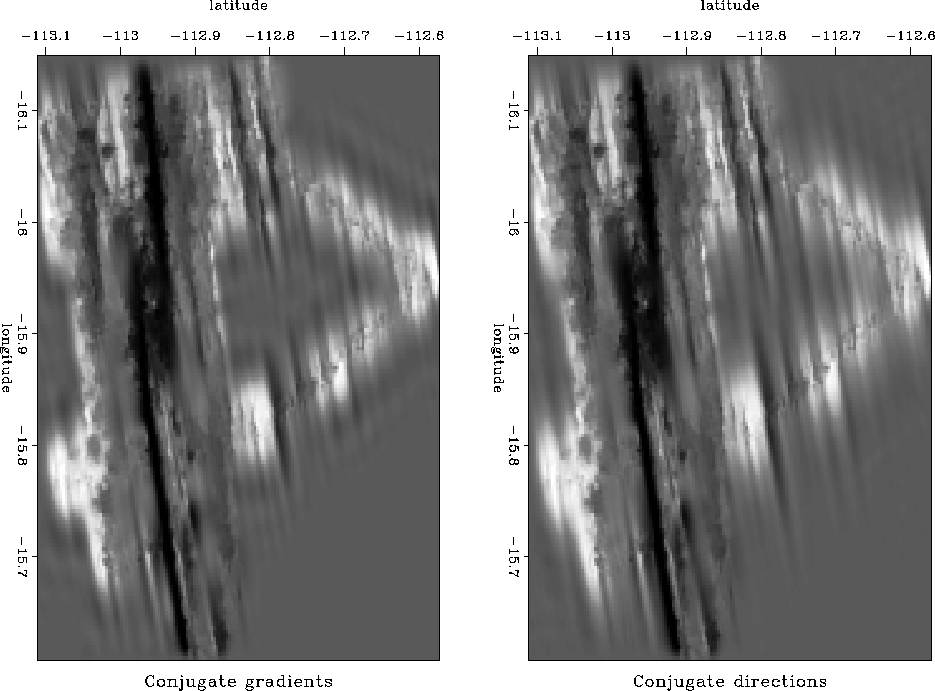




Next: Conclusions
Up: EXAMPLES
Previous: Example 2: Velocity transform
The third example is the linearized nonlinear inversion for
interpolating the SeaBeam dataset
Claerbout (1994); Crawley (1995b). This interpolation problem
is nonlinear because the prediction-error filter is estimated
simultaneously with the missing data. The conjugate-gradient
solver showed a very slow convergence in this case. Figure
7 compares the results of the conjugate-gradient and
conjugate-direction methods after 2500 iterations. Because of the
large scale of the problem, I set niter=4 in the
cdstep() program, storing only the three preceding steps of the
conjugate-direction optimization. The acceleration of convergence
produced a noticeably better interpolation, which is visible in the
figure.
dirjbm
Figure 7 SeaBeam interpolation.
Left plot: the result of the conjugate-gradient inversion
after 2500 iterations. Right plot: the result of the short-memory
conjugate-direction inversion after 2500 iterations.










Next: Conclusions
Up: EXAMPLES
Previous: Example 2: Velocity transform
Stanford Exploration Project
11/12/1997

